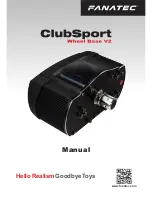
Instruction Manual
D200126X012
2502 Controllers
June 2017
15
Differential Relief Adjustment
The differential relief valve protrudes from the back of the controller case on a construction with an F in the type
number. Although normally factory‐set to relieve when the differential between the proportional and reset bellows
reaches 5 psi, the differential may be reduced down to 2 psi by turning the adjustment screw clockwise or increased up
to 7 psi by turning the screw counterclockwise. The minimum differential setting will yield the minimum set point
overshoot during startup.
Depending on the characteristics of the process, the relief valve can be positioned so that the arrow cast on the case
points either to the letters RE (reset) or to the letter P (proportional) on the back of the manifold. To reposition the
arrow, see figure 9. Remove the mounting screws. Reposition the differential relief valve to RE or P and reinstall the
mounting screws.
Calibration
Precalibration Requirements
Note
Calibration of a unit with a displacer designed for interface or density control must be conducted with the displacer completely
submerged in a liquid of the specific gravity for which the unit was designed.
To calibrate a controller, it is necessary to place the device into operation. This may be done on the vessel with the
actual service liquid. It may also be done in the shop, but other means of obtaining a displacement force change must
be provided. It must be done in the shop if the process variable is not available for calibration or if the process cannot
be varied for calibration. There are two methods of adapting the calibration procedure to shop calibration: wet and
dry.
Wet Calibration
Remove the entire controller and sensor assembly from the vessel. For caged sensors, pour the liquid into the cage.
For cageless sensors, suspend the displacer to an appropriate depth in a liquid having a specific gravity equal to that of
the process liquid.
If necessary, use water for wet calibration in the shop. However, this procedure requires compensation for the
difference between the specific gravity of the water and that of the process liquids. For example, assume that the
process liquid has a specific gravity of 0.7 and that wet calibration with water (specific gravity of 1.0) is desired. To
simulate a process level of 50 percent of the input span, a water level of 35 percent is required (0.7/1.0 x 50 percent =
35 percent).
Dry Calibration
Remove the controller and torque tube arm, as a single unit, from the cage or vessel. Then, wherever the standard
calibration instructions in this manual require a specific process variable for input to the sensor, simulate that variable
by suspending the proper weight (such as a can of sand) from the end of the displacer rod. Complete the following
Controller and Torque Tube Arm Disassembly and the Determining Suspended Weight for Calibration sections before
proceeding to the calibration procedure.
















































